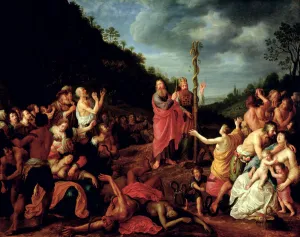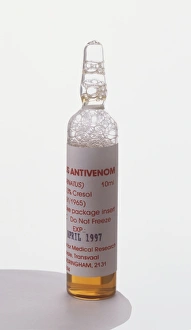Snakebite Collection
Throughout history, the venomous bite of a snake has struck fear into the hearts of many, from the legendary encounter between Cleopatra and Augustus Caesar
All Professionally Made to Order for Quick Shipping
Throughout history, the venomous bite of a snake has struck fear into the hearts of many, from the legendary encounter between Cleopatra and Augustus Caesar, to the biblical tale of Moses and the Brazen Serpent. Depictions of snakebites and their remedies can be found in art and literature, such as the oil paintings "The Brazen Serpent (c. 1635-40)" and "Moses and the Brazen Serpent (1640), " and the surgical text "Das Buch der Cirugia" from Strasbourg. In the face of such danger, figures like Belisarius and Eurydice have been depicted wounded and seeking relief. The discovery of antivenin, symbolized by the ampoule of orange liquid with foam at the top, has brought hope and healing to those bitten by these ancient adversaries. From ancient civilizations to modern medicine, the fear and fascination with snakebites continues to captivate us.












